(Sort of a repeat) Without the right transportation planning framework, metropolitan areas are screwed, and that includes the DC area
WMATA extension outward has been an issue for years, with various proposals to BWI Airport, southward on the Green Line from Branch Avenue deeper into Prince George's County, and further into Northern Virginia.
I don't feel like I need to write about the specifics so much, because I have done so before. However, looking at my presentation on Metropolitan Mass Transit Planning: Towards a Hierarchical and Conceptual Framework which is discussed below, I guess I would have to add probably up to 4 slides, first to further discuss Belmont's point about the difference between polycentric and monocentric transit networks; and second, THE NEED FOR SUBURBAN COUNTIES TO PRODUCE ROBUST AND INNOVATIVE AND COMPLETE TRANSPORTATION PLANS, comparable to the Arlington County Master Transportation Plan, but appropriate for their jurisdictions, ensuring that mass transit is covered.
I can't claim to be an expert on how MPOs work. Some are more powerful than others, and act for the most part, as regional planning organizations. I was gonna mention the MPO in Minneapolis, which also runs the transit system and manages the regional water system, and does regional parks planning (even if parks are run by the counties/City of Minneapolis), and contrast that to the TPB, which has the misfortune of covering an area encompassing three "states" (technically DC is not a state) and a more complicated political, organizational, and spatial environment. (Another example might be the regional government in Portland, Metro, which has responsibilities across multiple jurisdictions.)
Then I was going to include as an example to strive to be more like, the Center for Neighborhood Technology, a nonprofit (not an MPO) engaged in a variety of leading edge planning efforts in the Chicago metropolitan area, on environment and various green initiatives and transportation and community development, as an example of how a metropolitan planning organization could be more innovative and expansive in their role as leading metropolitan best practice land use, environment, energy, and transportation planning.
This comes up in the context of leading edge transportation (and land use and environmental) planning in the DC Metropolitan area, and that we aren't doing it. Or at least, the transportation planners aren't in the front of the pack, when it comes to initiate best practices in transportation planning. I think we can safely assume that the creation of Metrorail was more a happy accident that was the end result of an odd set of circumstances, rather than the beginning of a scalar improvement in metropolitan planning generally and transit planning and operations in particular.
I have a presentation on an idealized framework for transportation planning [which I presented to some academic departments at the University of Delaware in March 2010], and I specifically distinguish between planning for transportation at the scale of a metropolitan area (and regions, and nations, and internationally) and within a metropolitan area (I define a region as encompassing two or more metropolitan areas), at the overall level, within the suburbs, and within the center city, as well as more generalized transportation planning vs. transit planning by the local transit system operator(s).
-- Metropolitan Mass Transit Planning: Towards a Hierarchical and Conceptual Framework

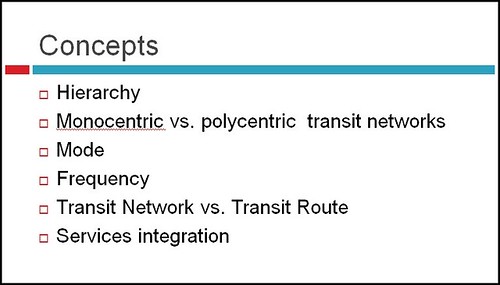
Plus, as I blogged in one of my earlier entries in March 2005, counties like Fairfax County need to not rely so much on Metrorail as much as they need to develop a wide-ranging transportation and transit plan of their own. (Maybe they have by now, I can't keep up.)
BeyondDC has a post on this broad problem, "A whole network is better than one line" in the context of the recent bill put forward by Northern Virginian Congressmen Moran and Connolly to study Metrorail expansion. He writes:
While it’s good news that Northern Virginia’s Congressional representation has an eye towards transit (though Frank Wolf’s absence is notable), the bill is a reminder of the fact that for many people in this region the word “transit” is one-dimensional code for Metrorail. This is unfortunate, because while Metrorail is undeniably great, it isn’t the best solution to every transit problem we face. If we could could make the intellectual jump to accept a more diverse collection of transit modes, we would have the means to provide a better and more comprehensive regional transit network, faster and for less money. ...
The issue is that Metrorail is much, much more expensive to build than other transit modes such as commuter rail, light rail, streetcar, and BRT. Although MetroRail extensions to Woodbridge, Fort Belvoir and Centreville might be wonderful in those individual corridors, for about the same cumulative cost we could put light rail on every major arterial street in Northern Virginia and upgrade all the VRE lines to Metro-like service levels, with trains running frequently all day and on weekends.
Basically, if we were a little more open-minded with modes, we could have a transit system that put rail stations within walking distance of almost everyone in Northern Virginia for about the same cost as a couple of Metrorail extensions.
But I would argue that the post while focusing on the right on point that it's far better to target the right kind of rail investment (streetcar, railroad, heavy rail, light rail) should have more directly discussed the broad problem--the need for planning at the metropolitan level, focused on creating, maintaining, and extending a complete and robust metropolitan transit network.
If we were to do true metropolitan-wide transportation (and therefore transit) planning, the specific transit modes take care of themselves, because you are planning for the best possible, most robust total and complete system, not for Metrorail this, or Arlington streetcar that. See the past blog entry for a discussion of the network concept, "Reprint (with editing): The Meta-Regional Transit Network."
And not just on extensions. Note that there are some interesting reports from the Center for Transportation Studies at the University of Minnesota. One report makes the point that the most benefit comes from the first 10 miles of the system, because that area is already likely to be more intensely developed, with the characteristics already in place that support sustainable transportation, ridership, and economic development.
-Transportation as Catalyst for Community Economic Development (Dec 2007, CTS 07-07)
Would that our Congresspeople learn this, as well as the local and state elected officials across the region.
Labels: smart growth vs. smarter sprawl, sustainable land use and resource planning, transit, transit and economic development, transportation planning
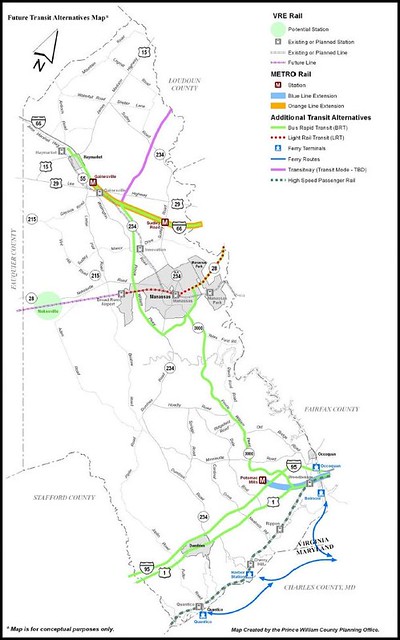

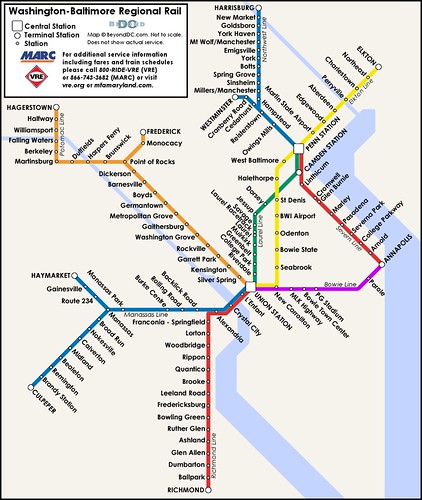
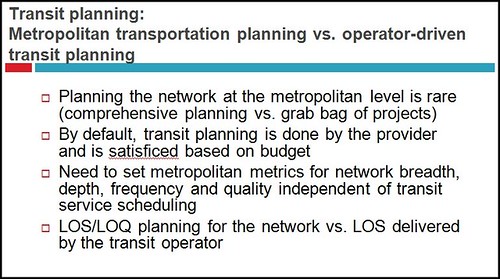

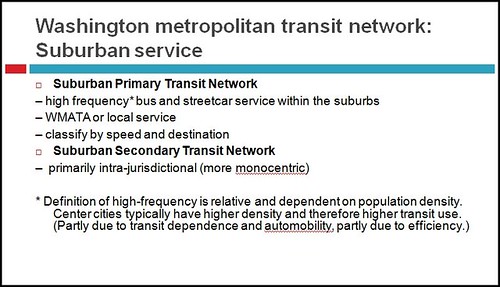
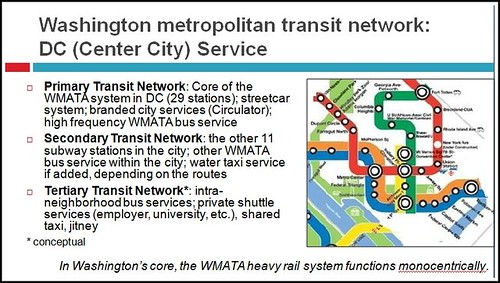



0 Comments:
Post a Comment
<< Home